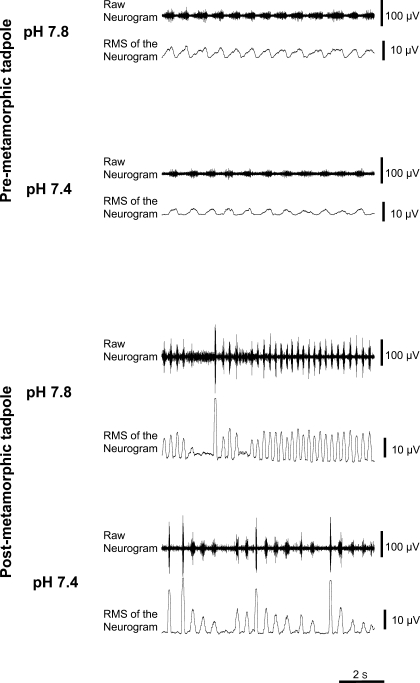Fig. 1.
Examples of recordings performed in the 7th cranial nerve of a premetamorphic (stage XIII) and of a postmetamorphic tadpole (stage XXIV). At each pH, the top trace shows the raw neurogram and the bottom trace its root mean square (RMS), obtained with a moving time constant of 100 ms. Bursts of lower amplitude correspond to gill or to buccal ventilatory rhythm and discharges of higher amplitude-to-lung ventilatory rhythm. The premetamorphic tadpole corresponds to preparation 7 in Table 2. Nonlinear complexity was detected, at pH 7.4 only, in the gill rhythm of which a sample is shown here, with an embedding dimension (K) of 8 and a degree of nonlinearity (d) of 4. The noise limit was 17%. In the case of this tadpole, the gill/buccal frequency decreased with pH. However, on average, pH variations had no significant effect on buccal period in premetarmorphic animals (see results and Fig. 2).

